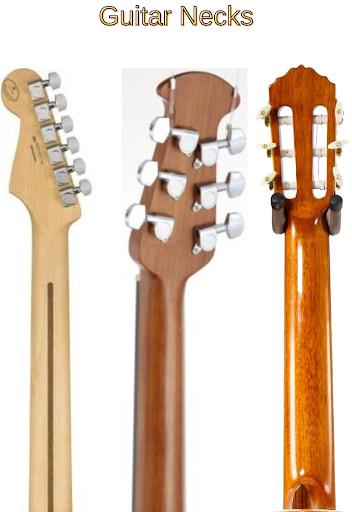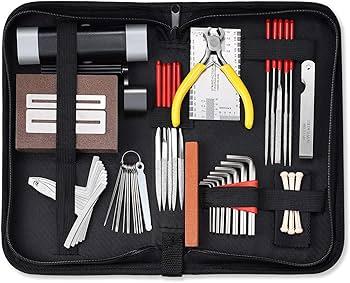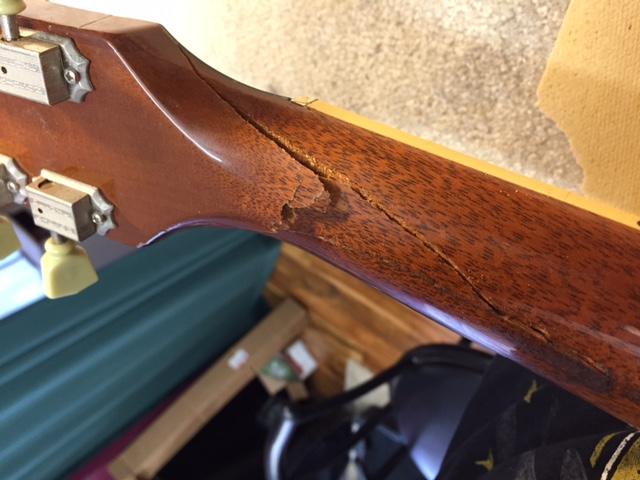No one forgets the moment they realize their beloved guitar is playing out of tune despite their best efforts. I’ve been there—meticulously adjusting strings, only to discover a persistent challenge hindering performance: a ridge on the guitar neck. The discovery led me on a fascinating journey into guitar anatomy and the intricacies of guitar construction.
Understanding these elusive ridges became a key turning point in my exploration, unlocking a deeper appreciation for how the instrument’s anatomy impacts sound and playability. At first glance, a guitar neck ridge might seem innocuous, but it holds the power to change the way we approach playing and maintaining our instruments. Through enhanced insights and practical repair techniques, I invite you to join me in this deep dive into the anatomy of the guitar.
We’ll explore what causes these ridges, how to identify them, and, most importantly, how to remedy them, ensuring your guitar remains the reliable companion you’ve always known.
What is a Ridge on a Guitar Neck?

When I first delved into the intricate world of guitar construction, I was mesmerized by how small details could significantly impact the instrument’s overall character. One such detail is the ridge on a guitar neck. Did you know that a minor variance in neck profile can lead to a noticeable difference in tone and playability? This seemingly minor feature can make all the difference in a guitarist’s experience.
A ridge on the guitar neck is a palpable, often unintentional, raised area that runs along the neck’s surface. Typically, ridges are not part of the original design, but rather, they develop over time due to various factors like humidity changes, tension from the strings, or even slight variances in the wood’s natural grain. From my years of crafting and repairing instruments, I’ve learned that such ridges can subtly, yet profoundly, alter both the feel under the player’s hand and the tonal resonance that emerges from strumming or picking.
This fine contouring directly affects how the player interacts with the fretboard, which in turn influences the sound. Understanding these nuances not only refines one’s repair skills but also fosters a deeper connection to the craft of guitar making. Let me guide you through this journey of understanding the ridge on guitar necks, drawing from my own experiences and expertise.
Why Do Ridges Occur?

What hidden forces at play in guitar construction can lead to unwanted ridges on your prized instrument? This question has intrigued me throughout my years of delving into luthier research. My fascination with the guitar’s anatomy has led me to uncover the complex interplay of factors that subtly shape the instrument’s neck. These forces are stealthily orchestrated by nature and craftsmanship, melding together to challenge even the most seasoned guitar makers.
First, let’s consider the wood itself. Each piece of wood is unique, with its own grain pattern and responsiveness to environmental changes. The natural propensity of wood to expand and contract with humidity and temperature fluctuations can initiate the formation of ridges. This characteristic is both the wood’s charm and its challenge—a relentless force that demands acute awareness and expert handling.
Moreover, the cumulative stress from string tension compounds the complexity. Over time, the pressure exerted by the strings, combined with the wood’s dynamic nature, can gradually warp the neck in subtle but significant ways. Through my hands-on experiences, I’ve learned that the curing and final assembly stages hold hidden keys to preventing these ridges. Care in material choice and precise construction methods help mitigate these unfavorable transformations, blending art with science in the quest for a flawless neck.
Understanding these underlying dynamics empowers us, not only in repair but also in appreciating the intricate balance that goes into crafting a resilient guitar neck. Every ridge tells a story—a testament to the wood’s journey from tree to instrument, and our role as luthiers is to respect and learn from these narratives.
How to Identify and Repair a Ridge on a Guitar Neck
Tools Needed for Repair

Have you ever considered that the quality of your tools might determine the success of your guitar repair? As I delved deeper into guitar maintenance and guitar construction over the years, I found that employing the right tools was not just a preference but a necessity. In the process of repairing a ridge on a guitar neck, the selection of precision tools makes all the difference. A reliable straightedge is crucial for identifying the extent of unevenness, while a set of high-quality files and sandpapers ensures the ridge is smoothly leveled. I also rely on specialized clamps to maintain the structural integrity of the neck as repairs progress.
To deliver a professional finish, each instrument requires its unique approach and toolset. Every repair is a testament to the meticulous attention necessary in lutherie. My experiences have shown that understanding the nuances of each tool contributes significantly to a successful outcome. This insight into the interplay of tools and technique sets the foundation for the subsequent Step-by-Step Repair Guide, ensuring that the journey from diagnosis to repair is both informed and effective.
Step-by-Step Repair Guide

Could mastering the repair of a guitar neck ridge elevate not just your instrument’s sound, but also your skills as a guitarist? In my experience, the journey to a perfectly smooth guitar neck begins with understanding the materials at play. Each type of guitar neck material—whether it be maple, mahogany, or rosewood—affects the approach you should take. Ridges can disrupt guitar playability, hindering your ability to perform smoothly. Here’s how to tackle this common issue effectively.
Drawing on my many years of experience as a luthier, I’ve developed a systematic approach to repair that ensures even those new to this craft can achieve professional results. First, assess the ridge using a straightedge to confirm the level of unevenness. This careful evaluation will dictate the technique—whether gentle sanding or planing is needed to level the surface without compromising the neck’s integrity. You’ll require specialized tools, like a sanding block and fine-grain sandpaper, to delicately refine the ridge until it blends seamlessly with the rest of the neck.
Throughout this process, it’s crucial to prioritize the uniformity of the neck’s curve to maintain optimal playability. By engaging with this meticulous practice, not only do you enhance the acoustic quality of your guitar, but you also gain invaluable insight into the instrument itself, refining your understanding and skills as a musician. Let’s delve into this detailed roadmap, turning a daunting repair into an empowering experience.
Common Issues Related to Ridges

In my years of working closely with guitar necks, especially through my editorial endeavors in the realm of lutherie, I’ve seen firsthand how seemingly minor flaws can snowball into persistent challenges. One nagging issue involves guitar neck ridges, which can prove to be a vexing obstacle for musicians at any level. What commonly overlooked factors could lead to persistent issues with guitar neck ridges that every guitarist should know? This question often hangs in the air during my discussions with fellow connoisseurs of the craft.
Many assume the blame lies solely with the wood’s natural expansion and contraction. While that’s certainly a player, I’ve encountered countless cases where the culprit was instead hidden in the fretwork or an improperly adjusted truss rod. The act of overlooking these components leaves musicians grappling with ridges that just don’t quit. My passion for uncovering the nuances of these issues allows me to share vital insights that can often go unnoticed in the hustle of everyday practice.
Having a grounded understanding of these pieces is crucial; it equips any guitarist to address potential misalignments before they morph into full-fledged hurdles. My experience drives home the importance of vigilance—a commitment to addressing these factors not only enriches your playing but nourishes your relationship with your beloved instrument.
FAQs
What is the ridge on a guitar neck?
What causes the ridge on a guitar neck?
How can I repair a ridge on my guitar neck?
Can humidity control help prevent ridges on guitar necks?
Is the ridge on a guitar neck a common problem?
Conclusion
What legacy do you want your guitar to have in terms of craftsmanship and musical expression? This question brings us back to the heart of the matter: the pivotal role of guitar anatomy in shaping not only sound but also the lasting legacy of your instrument. In understanding the ridge on guitar necks, we delve deeply into guitar design as a cornerstone of its functionality and aesthetic. Through my experiences, I know diligent maintenance is essential. It’s not merely about immediate function; it’s about ensuring the neck, a key component, supports your musical journey for years to come.
Ridges often signal underlying issues related to humidity or material wear. Identifying these early can prevent more extensive damage. With the insights and repair techniques shared, you’re equipped to address these challenges effectively. Your dedication to this aspect of guitar care ultimately reflects not just on the instrument’s durability but on the integrity and passion you invest in each note you play.

R.M. Mottola, an engineer-turned-luthier, revolutionizes stringed instrument design with his deep focus on acoustics and ergonomics since 1994. As editor of the Savart Journal and a key contributor to American Lutherie, Mottola merges science with artistry in lutherie. He enriches the field with his extensive knowledge, shared through his Liutaio Mottola website, making him a beacon in the world of modern instrument craftsmanship.
